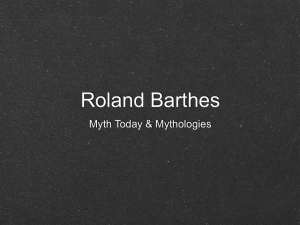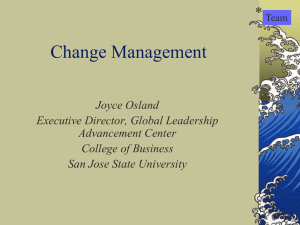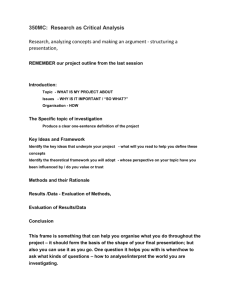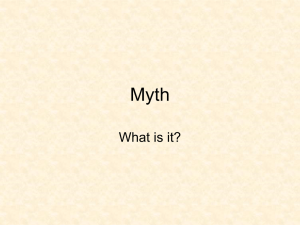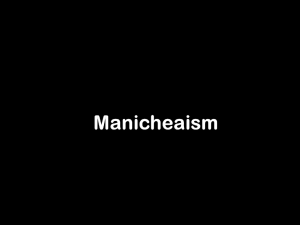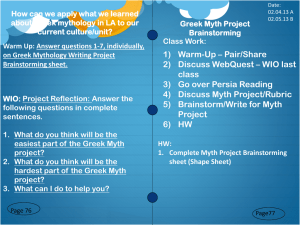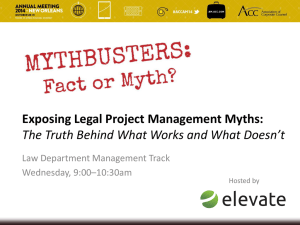Document
advertisement
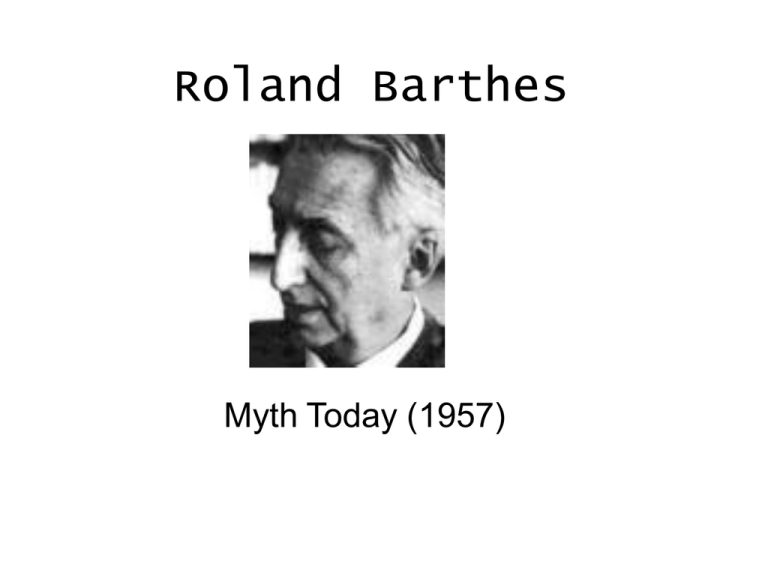
Roland Barthes Myth Today (1957) The Life of Roland Barthes • Barthes born in Cherbough,Manche on Nov.12,1915 • 1916- After father’s death, Barthes and mother,Henriette move to Bayonne where he spends childhood • 1924- Move to Paris and attends Lycee Montaigne until 1930. • 1927- Henriette gives birth to illegitimate child, Barthe’s half-brother, Michel Salzado and is denied financial help from her parents. She becomes bookbinder to support her family. • Barthes studies at the Sorbonne: classical literature,Greek tragedy,grammar and philology, and receives degrees in classical literature (1939) & grammar and philology (1943) • 1934- Contracts tuberculosis and spends app. 3 years in sanatoriums. His illness prevented him from completing doctoral research so be began to read and soon began his writing career. • 1939-52 : Teaches at lycées in Biarritz(1939),Bayonne (1939-40),Paris (1942-46),French Institute in Romania (1948-49), University of Alexandria, Egypt (1949-50), and Direction Generales des Affaires Culturelles (1950-52) • 1960-76: Director of studies at Ecole Pratique des Hautes Etudes • 1967-68: Taught at Johns Hopkins University • 1976-80: Chair of literary semiology at College de France The Works of Roland Barthes • Le Degré Zéro De L'Ecriture (Writing Degree Zero- 1953) published as series of articles in Albert Camus’ journal, Combat. Establishes Barthe as leading critics of Modernist literature in France. Introduces concept écriture or scription as distinguished from style, language, and writing • Michelet Par Lui-Même (1954), biography of Jules Michelet who was a 19th century historian and focused on how existential reality is given to historical moments and related to historian’s writing • MYTHOLOGIES (1957) uses semiological concepts in analysis of myths and signs in contemporary culture. Analyzed newspapers, films, shows, exhibitions being connected to ideological abuse.*Myth Today is the last essay from this collection • SUR RACINE (1963) was most controversial work due to nonscholarly appreciation of Racine. • ELÉMENTS DE SÉMIOLOGIE (1964) deals with his views on the “science of signs” based on Ferdinand de Saussure’s concept of language and analysis of myth and ritual • S/Z (1970) applied structural linguistics which analyzed Balzac’s short story “Sarrasine” Key Concepts in “Myth Today” • Myth: a type of speech - Everything can be a myth if communicated through discourse - No such thing as an eternal myth; human history determines reality through speech and that is constantly changing - Myth not defined by its object or material because meaning is arbitrary • Myth: Part of Semiology - Semiology is a science of forms that studies signification separately from its content - Tri-dimensional pattern of Myth -signifier -signified -sign - Myth is a second-order semiological system - comprised of semiological chain that existed before it - the sign in the first-order becomes the signifier in the second - form (signifier) - concept (signified) - signification (relationship between signifier & signified) - First-order semiological system - meaning (signifier) - concept (signified) - sign Myth Made Up of Two Semiological Systems • Language-object ( linguistic system) - the language is what myth constructs own system from • Metalanguage - Myth is a second language that refers to the first language

